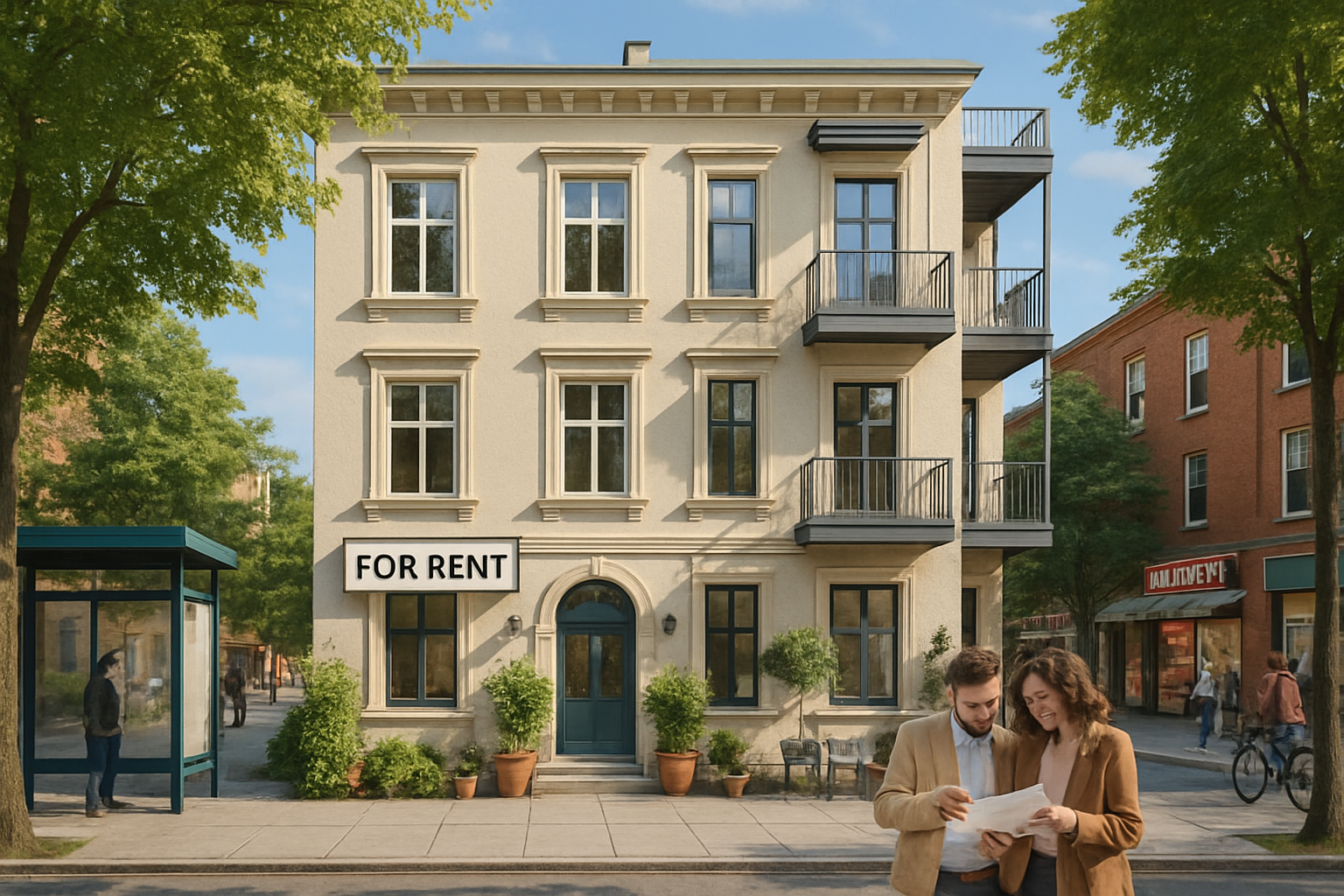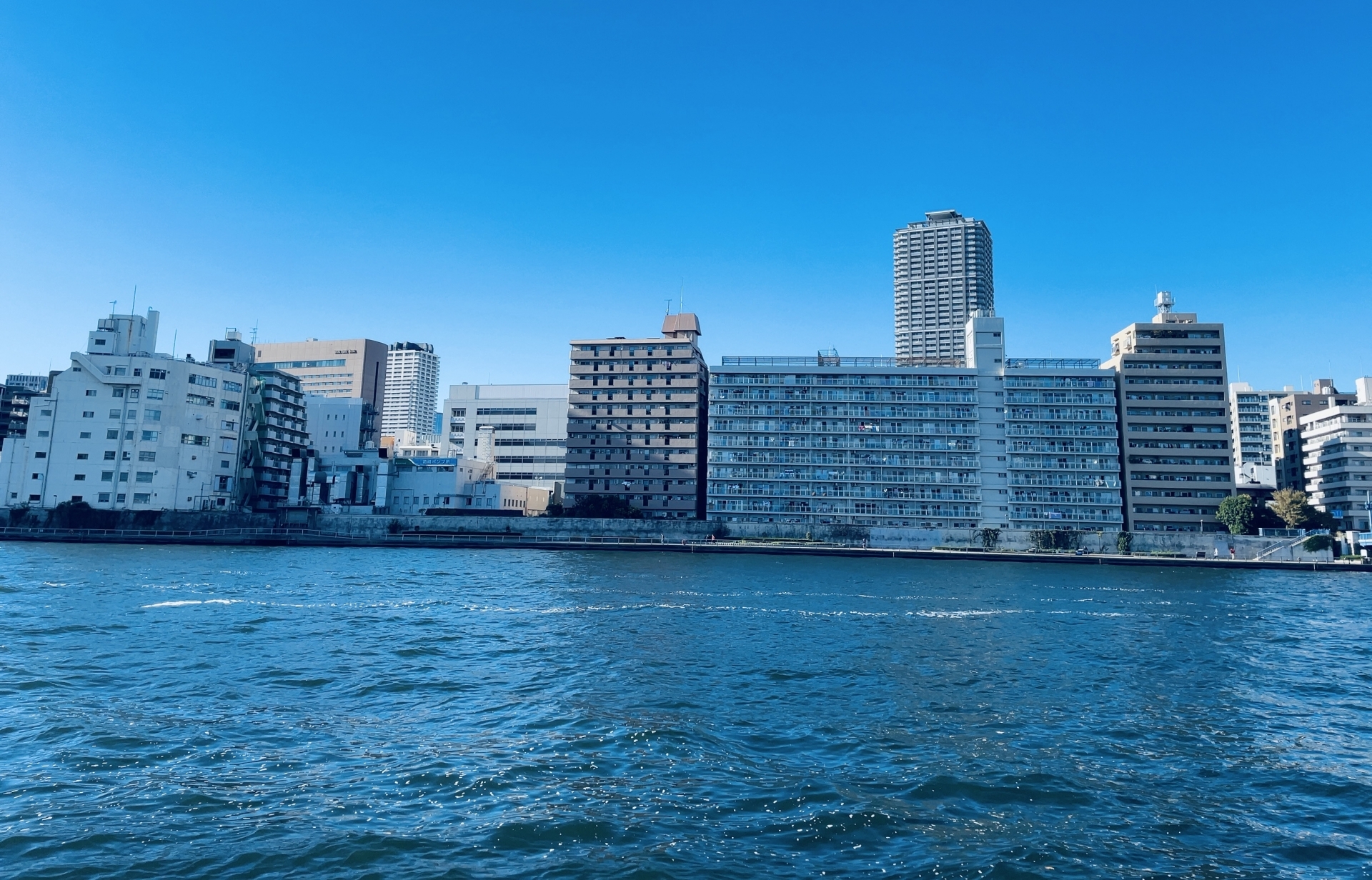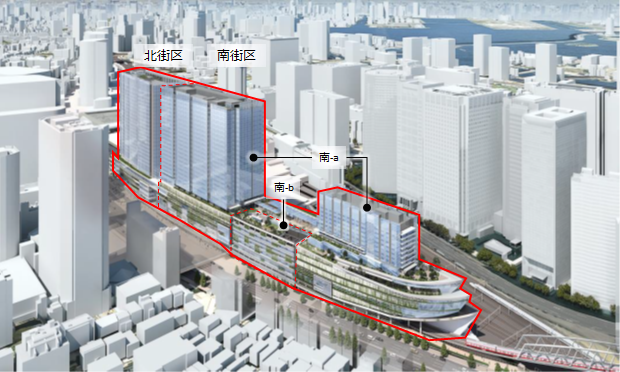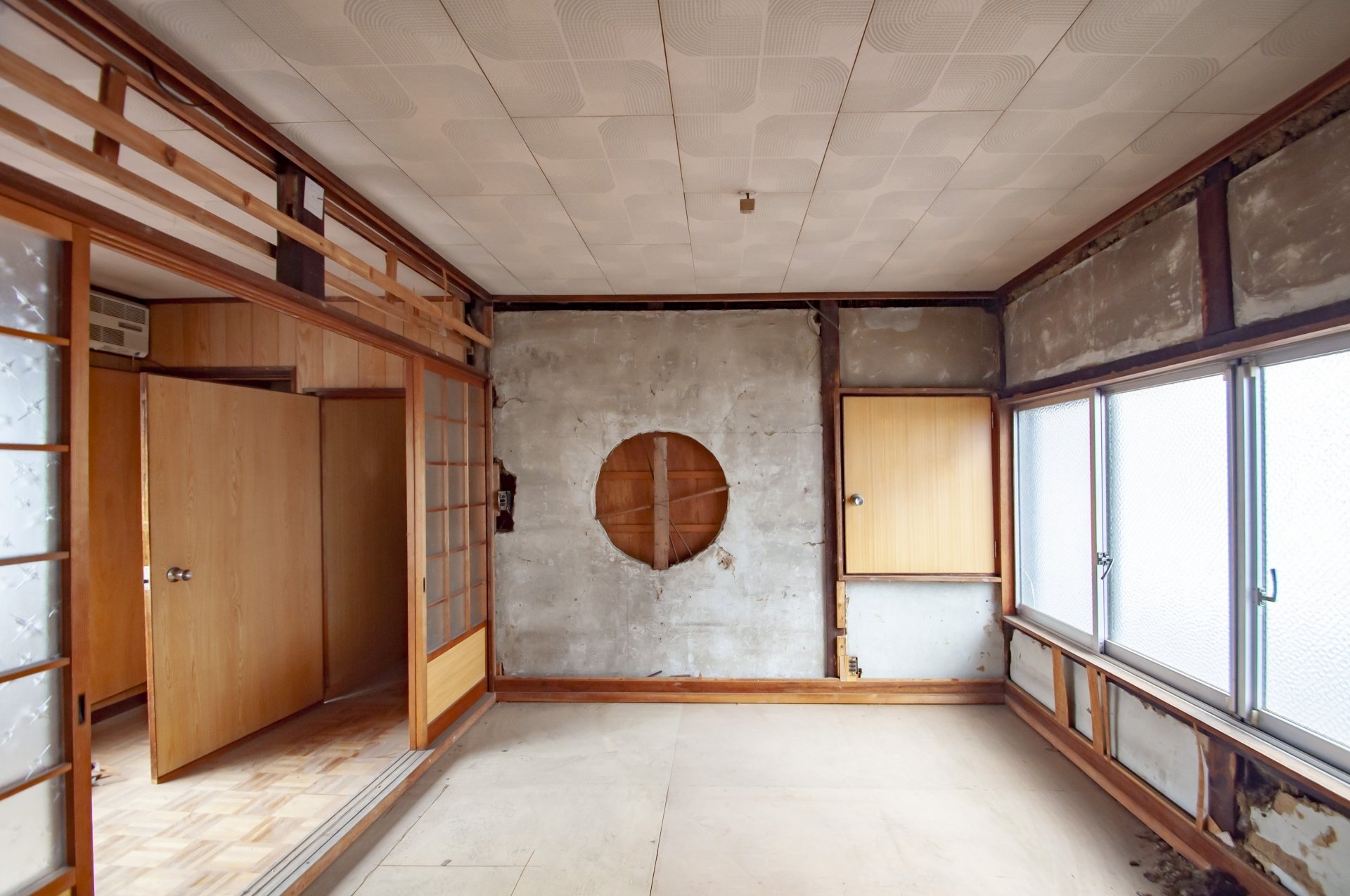The real estate market in Tokyo's 23 wards has been booming in recent years, with property prices reportedly reaching all-time highs. Under such circumstances, it is extremely important for real estate investors to determine when to sell ("when to sell") in order to maximize investment results. Especially for ultra-high-net-worth investors who manage multiple properties, the timing of a sale can make a difference of several hundred million yen. In this article, we will explain the key points for making a sale decision based on typical indicators such as yield decline, building age, and exit strategy (tax planning), while taking into account recent market trends in the 23 wards of Tokyo. In addition, the presentation will examine sales scenarios by timing (5 years after purchase, over 20 years old, inflationary phase) and provide practical advice for maximizing gains on sales (selection of brokerage firms and transfer income tax measures). While being objective and from a practitioner's point of view, the tone of the article will be friendly to the reader, the investor.
Key Indicators for Selling Decision: Declining Yield, Building Age, and Exit Strategy
To determine when it is time to sell a property, it is necessary to focus on three main indicators: changes in profitability (yield decline), property maturity (age of the property), and exit strategy (tax burden, etc.). It is important to understand the impact of each indicator on investment performance and make a comprehensive judgment.
Decline in yield (deterioration in profitability)
The yield (ROI) earned from an investment property is fundamental to investment decisions. If the yield has declined significantly from the time of purchase, the benefits of continuing to hold the property may have diminished. Factors that may cause a decline in yield include rising property prices, falling rents and vacancies, and rising maintenance costs.
In the Tokyo market in recent years, investors' yield expectations (NOI yield) have been declining: yields have fallen from around 7% in the early 2000s to the 4% range in recent years, and the decline in yields has been particularly pronounced in recent years. Lower yields mean that properties can be sold at higher prices. In fact, in recent years, the price of income-producing properties has continued to rise due to lower NOI yields, and the investment condominium market continues to be a "good time to sell". If a sufficient capital gain can be expected due to a decline in yields, it is worth considering selling the property.
To determine whether yields are declining, we check both the overall market trend and the individual income trends of the properties we own. For example, a property with an assumed yield of 6% at the time of purchase may have declined to an actual yield of 4% due to price appreciation. In this case, the profitability of the entire portfolio may be improved by allocating the proceeds from the sale of the property to another highly profitable project. In addition, the decline in yields is closely related to the financial environment. Generally, when interest rates are low, real estate yields also fall and property prices rise. Therefore, if a property can be sold in a low interest rate environment, a high price can be expected. Conversely, if interest rates are expected to rise in the future due to inflation or other factors, a defensive strategy may be to sell before yields rise (prices fall).
Building Age and Changes in Property Value
The age of a property has a significant impact on the value of the building and its profitability. The older a building is, the more it deteriorates physically and functionally, leading to lower rent levels, higher vacancy risk, and higher repair costs. For example, as the building ages, large repair costs are required for large-scale repairs to common areas and updating of indoor facilities, putting pressure on net income (NOI). The burden of remodeling when tenants move out also becomes heavy, and in some cases, older properties have to consider drastic renovations as a measure to prevent vacancies (in some cases, it costs 1 to 1.5 million yen just to replace a unit bath). Such cost increases can lead to a decline in real yields, and can be a signal that "deteriorating profitability due to aging = time to sell".
The decrease in asset value with the progression of building age should not be ignored. In general, the value of a building diminishes as it ages, and after a certain number of years, the value declines significantly. For example, according to data from the Ministry of Land, Infrastructure, Transport and Tourism, the value of a wooden detached house is estimated to be almost zero after 20 years of construction (in this case, the assessed value is only the land value). In the case of condominiums, the 20-year age is also a major turning point in property values. Looking at the average price of used condominiums in the Tokyo metropolitan area, the data shows that if the value of a newly built condominium is set at 100, the price drops to approximately 69 (31% decline) when the building is 16 to 20 years old, and to approximately 53 (47% decline) when the building is 21 to 25 years old. The general trend is for prices to drop by nearly half from the time of new construction around 20 years old, and analysis shows that even within the 23 wards of Tokyo, the estimated market price of a 20-year-old condominium is about 50% of the price of a new building. Therefore, considering the useful life of the building and its marketability, it is advantageous to sell when the building is young (when there is still sufficient asset value remaining).
However, depending on location conditions and demand trends, there are cases where even older properties maintain high value. In areas such as the 23 wards of Tokyo, where the population continues to flow in and single-person households are in high demand, it has been pointed out that the price decline of studio apartments tends to be slow even if the building age is old. In fact, in some cases, properties in prime locations in central Tokyo, even if they are older, vacancies fill up quickly and stable rental income can be obtained without causing a significant price decline. Still, as a general rule, it is true that newer buildings are easier to sell at higher prices and attract buyers. From the buyer's perspective, the older the building is, the shorter the loan period (and the higher the monthly repayment burden), and the higher the risk of asset deterioration, the less willing the buyer is to purchase the property. Therefore, it is advisable to consider selling the property once before the age of the building reaches the low double-digit range (around 20 years) to replace the assets.
Consideration of exit strategy and tax burden (transfer income tax, etc.)
In order to maximize the net result of real estate investment, it is important to minimize costs and taxes at the time of sale as an exit strategy. In particular, transfer income tax on capital gains is an important indicator directly related to the timing of sale, as the tax rate varies greatly depending on the period of property ownership.
In Japan, when an individual sells real estate, it is classified as either long-term or short-term gain depending on whether the property was owned for more or less than five years. If the property is sold within five years of acquisition (short-term transfer income), the tax rate is much higher than that for over five years (long-term transfer income). Specifically, while the tax rate for long-term transfer income is approximately 20.3% (15% income tax, 5% inhabitant tax, and special income tax for reconstruction), the tax rate for short-term transfer income is approximately 39.6% (30% income tax, 9% inhabitant tax, and special income tax for reconstruction), almost twice as high. Therefore, the theory is that if you expect to make a profit on the sale, you should wait until you have owned the property for at least five years before taking advantage of the preferential tax rate for long-term transfer income. For example, if the property is sold in the fourth year after purchase, a tax rate of 39% is applied, whereas if the property is owned for more than five years after purchase, the tax rate is only 20%.
In addition to transfer income tax, various other costs are incurred at the time of sale, such as inhabitant tax, stamp tax, real estate brokerage fees, and penalties for lump-sum loan repayment. As an exit strategy, it is necessary to calculate backwards "how much money will be left in your hand" after taking these costs into account, and to grasp the break-even point of the sale. For ultra-high-net-worth investors in particular, it may be effective to sell multiple properties in a planned manner to reduce the tax burden by adjusting the gain on sale by spreading out the sale of multiple properties from year to year or by adding up other losses (e.g., losses from the sale of other properties or losses carried forward). In some cases, instead of selling the property itself, schemes such as selling shares in a real estate holding company or buying and selling trust beneficiary rights may be used to avoid or defer direct real estate transfer taxation (consulting a specialist is necessary for advanced schemes).
In summary, even if you have an advantage in selling the property in terms of yield and building age, it is important to wait until the optimum timing in consideration of the tax burden. Conversely, even if a high tax rate is imposed for a short-term transfer, if the gain on the sale itself is large enough to secure a profit after taxes when market conditions improve and the price jumps significantly, it is necessary to have the flexibility to make a decision to sell. In the end, it is important to make a decision based on the real yield after factoring in the tax effect, rather than "with taxes.
Latest Market Trends in Tokyo's 23 Wards: Differences between Popular Areas and Other Areas
Understanding the real estate market trends in Tokyo's 23 wards is an important factor in determining when to sell. An overview of recent market conditions shows that prices of used condominiums in the 23 wards as a whole continue to rise, with some data indicating a nearly 20% year-on-year surge by 2024. For example, according to statistics from a real estate research firm, as of November 2024, the average contract price of an existing condominium (70m2 equivalent) in Tokyo's 23 wards had risen for seven consecutive months to approximately 85.31 million yen, recording an increase of nearly 20% over the same month last year. It is no exaggeration to say that the 23 wards of Tokyo are currently in a high price range exceeding the bubble period, as the average price of newly built condominiums is reported to have exceeded 100 million yen for two consecutive years.
However, this upward trend also varies by area. Even within the 23 wards of Tokyo, there are differences in market trends between popular areas such as the three central Tokyo wards (Chiyoda, Chuo, and Minato), Shibuya and Shinjuku wards, and suburban areas such as Joto and Jokita. A comparison of average land prices shows a clear difference: according to the official announcement of land prices in fiscal 2023, the average land price (residential land) in Chiyoda-ku is the highest at approximately 3.19 million yen per square meter, while the lowest ranked Katsushika-ku is approximately 330,000 yen per square meter, a difference of about 10 times. In addition to Chiyoda-ku, Minato-ku (approximately 2.13 million yen per square meter), Chuo-ku (approximately 1.32 million yen per square meter), and Shibuya-ku (approximately 1.26 million yen per square meter) follow at the top, while Adachi-ku (approximately 350,000 yen per square meter) and Katsushika-ku (approximately 330,000 yen per square meter) are at the bottom, indicating a large disparity in property values within the same 23 wards.
This disparity is also reflected in market trends. In popular areas, transactions are easily concluded even at high prices and liquidity is high, while in suburban areas, the momentum of price increases is relatively slow. In central Tokyo, for example, transactions of high-priced properties have been increasing since the beginning of the 2020s on the back of demand from foreign investors and a shift in assets among the wealthy, and a series of redevelopment projects are also boosting land prices. On the other hand, while there are some positive factors in suburban residential areas, such as increased demand due to the establishment of telecommuting after the Corona disaster, the supply and demand for existing properties varies from area to area due to population decline and the supply of new houses.
An interesting example is Toshima Ward. Although Toshima Ward (Ikebukuro area) is not in the top tier of land prices among the 23 wards of Tokyo, it showed the highest land price growth rate of +6.2% in 2023, due in part to redevelopment in recent years. Thus, it is not necessarily the case that only the three central wards of Tokyo are growing, but areas with clear demand drivers, such as redevelopment and improved convenience, are recording high growth rates. Conversely, if you own a property in such a promising area, you may decide not to sell it because you believe there is room for further price appreciation.
From the viewpoint of ultra-high-net-worth investors, then, how should we view the current market trend in the 23 wards of Tokyo? According to a general investor survey, 36% of investors think that 2024 is a "good time to sell" and 15% think it is a "good time to buy," indicating that more people have a favorable view of selling. While many investors see "now is a good time to sell" due to soaring prices, buyers are cautious about acquiring new properties due to high prices and stricter lending attitudes. Under these market conditions, while there is a high possibility that properties can be sold on good terms, it is important to keep in mind that buyers are also becoming more demanding. While properties in popular areas of central Tokyo are highly sought after by wealthy individuals and institutional investors and are easy to sell, properties in suburban areas may require more time to find buyers. Now that the market is booming, it is important to assess the supply-demand trend in each area and determine whether your property is in a "market that can be sold smoothly at a high price.
Case Study: Selling Scenarios by Timing
Based on the above indicators and market trends, let us consider some specific scenarios by timing of sale. Although the optimal solution will differ depending on each investor's situation, we will take up three representative cases: "5th year after purchase," "more than 20 years have passed since construction," and "inflation and interest rates are rising," and simulate the decision to sell under these scenarios.
Selling scenario in the fifth year after purchase
Scenario: Five years have passed since the property was acquired. Real estate market conditions have been improving since the purchase, property prices are on an upward trend, and rental income is stable. The property is just before/after meeting the conditions for long-term transfer income (more than 5 years) and is at a turning point where the tax rate on gains from the sale switches.
Analysis: In this case, the first major issue is whether or not the property has been in the market for more than 5 years. If possible, it would be advantageous to wait a few more months to sell the property after the 5-year period has elapsed.
In addition to the taxation aspect, the building is relatively new when it is only five years old, and it is attractive to buyers because of favorable loan evaluations by financial institutions. In particular, if the property was newly built at the time of purchase, the facilities are still new at around five years old, and buyers will feel a premium as a newer property. In fact, in the real estate market, condominiums that are less than five years old tend to be in high demand and sell for high prices, even if they are used. This is because they are "almost like new" to buyers, but the premium for new construction has diminished and they feel undervalued. Therefore, if the market price exceeds the acquisition price in the first few years after purchase, the fifth year is a good time to sell.
In addition, the loan is also taken into consideration. If you have a loan with equal principal and interest repayment, the reduction of the principal balance is slow at the beginning of repayment due to the large amount of interest payments, but after about five years, the principal has also been reduced to some extent. This is also the time when it becomes easier to pay off the remaining loan balance with the proceeds from the sale, and it can be said that this is the time when it is easy to obtain a large amount of remaining funds after the sale. Conversely, while the loan balance exceeds the property value (over-loan status), it is not a good time to sell because the debt remains even if the property is sold. It is important to look at the relationship between the market price and the loan balance around five years after purchase and simulate whether you can still make a profit after paying off the remaining debt.
Conclusion: The fifth year after purchase is the first time for many investors to seriously consider selling, if the value of the property has exceeded the purchase price while enjoying the benefit of favorable tax rates over five years. However, if market conditions are favorable and there is still room for price appreciation, or if there is no other good alternative investment, holding on to the property is an option. The important thing is to consider the market environment and your own investment strategy as a whole before reaching a conclusion, while using the "5-year rule" as one factor in your decision.
Selling Scenario for Properties Over 20 Years Old
Scenario: The property is more than 20 years old. A long period of time has passed since the property was purchased, rents have been declining since the beginning, the building has deteriorated, and the time for major repairs is approaching. Property prices have fallen significantly compared to when the property was newly built, and are approaching land values.
Analysis: Once a building is over 20 years old, the decline in building value and operational burdens become even more apparent. As mentioned above, the price level of condominiums in the Tokyo metropolitan area is generally about half the price of new buildings when built over 20 years ago, and the asset size has shrunk from its peak. However, the fact that they have been held up to this point suggests either that they have earned sufficient income gains during that time or that they have missed opportunities to sell due to the market environment. In either case, the following points should be considered when selling an older property
-
Repair risk and cost: After 20 years of age, it is time for condominiums to have undergone a major repair work (first cycle) or for houses and apartments to have major structural repairs. After this point, the repair cycle becomes shorter, and equipment breakdowns and problems tend to increase. Cash flow may deteriorate if future repair reserves and extraordinary expenses are anticipated. It is better to sell the property before additional investment (renovation, etc.) becomes necessary.
-
Evaluation at Exit: Older properties are more difficult to evaluate from the buyer's side (especially financial institutions). In the case of loan financing, the remaining useful life is affected, and it is difficult to obtain a long-term loan if the age of the building plus the number of years financed does not fall within the legal useful life of the property. For example, if the property is 25 years old while the useful life of an RC condominium is 47 years, the maximum loan term is about 22 years remaining, and the buyer's monthly repayment burden will be heavy. As a result, the number of buyers (those who can invest in cash or take out a short-term loan) is limited, and the property tends to be shunned in the market. Therefore, it is smoother to sell when the property is newer, before demand slackens. If the property is much older than 20 years old, selling itself becomes difficult and the price may have to be reduced further.
-
Change in cash flow (dead-crossing): When depreciation expenses reach the end of their useful life (e.g., 22 years for wood, 47 years for RC), a phenomenon called "dead-crossing" occurs, in which expenses on the books decrease and profits increase. Since the tax benefit of depreciation is eliminated, the same rental income will result in a decrease in net income. This is the tipping point where the tax benefits of long-term ownership diminish, and caution should be exercised especially with properties that have been held by individuals for a long period of time. Around 20 years old is also the time when the remaining depreciation is decreasing, so one way is to consider selling the property once the tax-saving effect has faded.
Based on the above, "rethinking exit strategies" is necessary for properties that are more than 20 years old. If rents are expected to decline and costs to increase in the future, it may be more efficient in total to convert the property to cash at an early stage and allocate the proceeds to a new property, even if the sale price is low. Especially for properties with land in central Tokyo, it may be possible to sell at land value by selling on the premise of clearing the land or rebuilding the property. In the case of ultra-wealthy individuals, it may be better to recombine the proceeds from the sale into assets rather than leaving aging properties to their children, taking into consideration not only the profitability of each property but also inheritance measures.
Conclusion: In many cases, investment properties that are more than 20 years old are considered to be a good time to sell. Of course, there are exceptions, such as a property in an excellent location where land prices are expected to rise in the future, or a property that has already been fully depreciated to the point of tax benefits, where holding on to the property at a high yield is a strategy that can be dared. Generally speaking, however, this is the stage when you should calmly assess the future cash flow and risks of older properties and consider selling them as an exit strategy to transfer funds to the "next move.
Selling Scenario under Inflation and Rising Interest Rates
Scenario: The economy enters an inflationary phase and the Bank of Japan begins to reduce monetary easing and raise interest rates. Inflation is driving up land prices and construction costs, but at the same time, interest rates are coming under increasing pressure, creating uncertainty in the real estate market.
Analysis: Inflation generally tends to push up the value of real estate, which is a real asset, and real estate is an effective inflation hedge asset under moderate inflation rates. In fact, as long as moderate price increases and low interest rates are compatible, real estate prices are likely to rise (as increased construction costs are also passed on to prices), and rents may also rise slowly when new contracts are signed. The problem, however, is when inflation exceeds a certain level and the monetary authorities move to raise interest rates.
Japan has long maintained a policy of ultra-low interest rates, but if interest rates were to rise in earnest, the effect would be felt immediately in the real estate market. Higher interest rates generally put downward pressure on real estate prices. This is because buyers' borrowing costs increase, reducing their purchasing power, and the expected yield (cap rate) on real estate investments increases as interest rates rise (i.e., prices are discounted). Specifically, investors who were able to obtain financing at the 1% level in the past, if they were offered a 3% interest rate, they would either postpone the purchase or demand a discount because their income and expenditures would deteriorate for the same property. Also, as indicated in the real estate investor survey, when interest rates rise, NOI yields tend to rise in tandem (and prices fall).
Therefore, if interest rates are certain to rise in the future during the inflationary phase, it is highly likely that the high-priced market formed on the premise of the current low interest rates will eventually enter an adjustment phase. Even in markets with strong demand, such as metropolitan areas, there will gradually be more downward pressure on prices if interest rates continue to rise. In particular, high-value properties for the wealthy and investment properties are likely to be the first to be affected. The reason is that the higher the price of a high-end property, the greater the increase in the loan burden due to interest rate fluctuations, and since the value of investment properties is determined by income calculations, the deterioration in yields due to higher interest rates will be directly reflected in the price.
On the other hand, inflation itself may increase nominal rental income. In general, rents for rental housing in Japan are usually fixed during the contract period, but asking rents for new construction or when tenants move in and out of the building rise and fall with the economy and prices. If inflation increases and labor supply and demand tighten, rents in urban areas will begin to rise, and property owners will benefit from increased income gains. In other words, inflation and low interest rates will increase the benefits of owning real estate, while inflation and high interest rates will decrease the benefits. The focus will be on whether this balance will be broken or not, as the current (mid-2020s) inflation rate in Japan is slightly higher while interest rates remain low.
Conclusion: It is difficult to make a decision to sell during an inflationary phase, but the key is to keep an eye on interest rate trends. If inflation is already high and interest rates are expected to rise, a defensive decision may be made to sell and cash out while asset values are at their peak. On the other hand, if the central bank maintains interest rate control even under inflationary conditions and the liquidity market continues, a strategy of holding on to the property in anticipation of another wave of real estate price appreciation may be effective. For ultra-high-net-worth investors, it may be possible to hedge risk across the entire portfolio and take a diversification approach by selling some properties to lock in profits while holding on to others. The key is not to simply believe that inflation = soaring real estate prices, but to factor in the underlying effects of changes in monetary policy and financing costs.
Practical Advice for Maximizing Gain on Sale
Once you have made the decision to sell at the right time, the next issue is how to maximize your gain on the sale from a practical standpoint. For ultra-high net worth investors, the profit from the sale of a single property can be on the order of tens to hundreds of millions of yen, and small differences in conditions can have a large impact on the final net proceeds. Below, we will focus on two points : selection of a reliable brokerage firm andmeasures against transfer tax, and explain the points for advancing the sale process favorably.
How to Select a Reliable Real Estate Brokerage Firm
In order to sell real estate at a high price, the cooperation of an excellent brokerage company/agent is essential. By selecting a brokerage firm that is particularly experienced in the sale and purchase of high-value properties and investment properties, you can take advantage of appropriate sales strategies and a network of potential buyers. The key points to consider when selecting a brokerage firm are as follows
-
Confirmation of track record and areas of expertise: Select a company that has extensive transaction experience in the same type of property and in the same area as the property you are selling. For example, if you are selling a single building in the city center, choose a company that has experience dealing with wealthy investors and funds. If you are selling a condominium for families in the suburbs, choose a company that is strong in selling to the general demand segment. It is a good idea to ask about past sales contracts and the clientele who inquired about them.
-
Ability to present a fair price: Request an appraisal from multiple companies and compare the appropriateness of the basis for the appraisal. Be aware that a company that offers an extremely high appraisal price may be paying lip service to the desire to sign a contract. On the other hand, a company that offers a price based on the market price and evidence, and also provides a specific sales strategy, such as "We will approach this segment of the market with this price," is trustworthy.
-
High Net Worth/Institutional Investor Network: In the case of ultra-high-net-worth properties, "off-market" transactions, where buyers are found under the radar before putting the property on the market, can be successful in some cases. Income-producing buildings and luxury homes in well-known areas may be more likely to fetch a high price if they are handled by a brokerage firm that has a list of high-net-worth clients, rather than advertised to a large number of unspecified parties, as this protects privacy. Having such a network is also a factor to be evaluated.
-
Communication and transparency: Communication is also important, including the speed of response from the broker, the accuracy of the proposal, and the frequency of reporting on the sales process. A trustworthy company will not engage in dishonest behavior, such as entrenchment, and will put the seller's profit maximization first. Let's also consider whether you can build a sense of affinity and trust with the person in charge.
In addition, whether to conclude a full-time mediation contract with one company or to make two or more companies general mediation depends on the strategy. There is a case in which full-time duty which hates information diffusion and limits it to a reliable source is better for a high-value property, and general mediation which widely calls and has a sales work done competitively may be successful. It is good to consult with a mediation company according to the kind of a housing and a market situation. Ultimately, choosing the partner who finds the best buyer while understanding the seller's intention is a shortcut to maximizing profit on sale.
Measures to reduce transfer income tax and financial planning
Although the aforementioned transfer income tax is the largest cost factor in real estate gains, there are several ways to reduce this burden through advance planning and ingenuity.
-
Use of long-term transfer income: Again, if the timing of the sale can be adjusted, the application of the long-term transfer tax rate by holding the property for more than five years is fundamental. Know the acquisition date for each property and adjust the dates to the extent possible if the planned sale takes less than five years. Note, however, that the property is determined by the period of ownership at the end of the year (e.g., if purchased in April 2019, the property will be owned for more than 5 years as of January 1, 2024, and a sale during 2024 will be treated as long-term).
-
Application of Special Deductions and Exemptions: When selling residential property, there is a special deduction of ¥30 million and a special exception for reduced tax rates for property owned for more than 10 years. However, they are basically inapplicable to pure investment properties. On the other hand, there are some cases where a special exception can be used, such as when the property is replaced through reorganization (with limited conditions, such as when the property is a home), or when the inherited property is sold within a certain period of time.
-
Recording of expenses and addition of acquisition costs: In the calculation of transfer income, recording acquisition costs and transfer expenses without omission is also directly related to tax savings. Include all possible expenses such as brokerage fees, registration fees, surveying fees for land, book value after deducting depreciation equivalents for buildings, and stamp fees at the time of transfer. Even if the acquisition cost of property acquired by inheritance is unknown, there is a special exception (special exception for addition of acquisition cost) that allows the inheritance tax paid by the decedent to be added to the acquisition cost in certain cases. Since inheritance taxes on high-value real estate can be substantial, there are cases where taxable gains on transfer can be reduced by applying this special exception.
-
Diversification of the time of sale and profit/loss aggregation: If you are a very wealthy person and plan to sell multiple properties, it is also effective to intentionally diversify the years in which the properties are transferred. Although transfer income tax is a separate and non-progressive tax, selling a large number of properties in the same year may affect other tax items such as inhabitant tax burden and national health insurance premiums. In addition, if a loss on transfer is incurred on one property, it can be offset with a gain on transfer of another property in the same year, so there is a decision to dare to combine sales within the same year (in principle, gain or loss on transfer of real estate can only be aggregated with other real estate transfers). Thus, it is important to design the year of sale to minimize the total tax burden.
-
Use of corporate scheme: For large investors, it may be more flexible to hold property as a corporation than as an individual. The corporate tax rate is fixed at approximately 23% (lower rate for small and medium-sized corporations), and there is also flexibility in the amount of profit and loss that can be passed through to other income within the business income. Even if the property is sold in the name of a corporation, it is subject to corporate tax rather than transfer income tax, and can be offset against expenses and other business losses. However, if the profit is eventually transferred to an individual, it may not be advantageous because of dividend taxation, etc. After simulating the long-term tax burden, a corporate scheme should be considered as necessary.
By taking the above measures, it is possible to maximize the amount of money remaining in one's possession even if the same gain is obtained from the sale. Since taxation tends to be more sophisticated for super-wealthy individuals, we recommend that you work with a reliable tax accountant/accountant and conduct a series of simulations before the sale. Especially when selling a property that has unrealized gains of hundreds of millions of yen, the difference can be tens of millions of yen or more depending on whether or not you have taken prior measures. Although it would be a mistake to miss the timing because you are only concerned about tax reduction, "selling at the right time and with the right measures" is the true exit strategy.
Conclusion
The decision on when to sell in real estate investment is more difficult than the one-time purchase decision, but it is an important process that determines the results of the investment and leads to the next stage of development. Based on market trends in the 23 wards of Tokyo, it is wise to always simulate "when is the best time to sell" by keeping an eye on objective indicators such as declining yields and the progression of building age, while also considering the impact on real proceeds such as transfer taxes.
Especially during a market boom period such as the current one, the dilemma arises as to whether one should sell during a bull market or hold for further appreciation. If you are an ultra-high-net-worth investor, you may be able to diversify your portfolio by selling some of your holdings to realize a profit while continuing to hold others. The important thing is to take the best course of action for your own portfolio strategy, not someone else's. While keeping an objective market analysis and a practical viewpoint, you must make decisions that are in line with your own asset situation and future plans.
Finally, the points discussed in this paper can be summarized as follows.
-
Typical indicators for deciding when it is time to sell a real estate investment: deteriorating profitability due to declining yields, declining value and increasing maintenance costs with the passage of time, and the onset of tax benefits such as holding the property for more than five years.
-
Current status of the market in Tokyo's 23 wards: A seller's market where prices continue to soar, but there are large disparities by area. In the central Tokyo area, high prices are being traded one after another, and the gap with suburban areas is widening.
-
Scenario by timing: Determine tax rate within 5 years of purchase, pay attention to aging risk and residual value if the property is over 20 years old, and watch interest rates during the inflationary phase.
-
Optimize sales practice: Maximize proceeds by using a reliable brokerage firm to approach the right buyer at the right price and minimize the tax burden in advance.
It is said that "the entrance (purchase) determines the profit" in real estate investment, but in reality, "it is the skillful exit (sale) that determines the final profit. In the dynamic market environment of Tokyo's 23 wards, we hope you will find the best timing and strategy for your own sale by utilizing the findings of this article. Don't miss the right time to sell, and take advantage of the opportunity to make your next investment or asset succession.

Daisuke Inazawa
Representative Director of INA&Associates Inc. Based in Osaka, Tokyo, and Kanagawa, he is engaged in real estate sales, leasing, and management. He provides services based on his extensive experience in the real estate industry. Based on the philosophy that “human resources are a company's most important asset,” he places great importance on human resource development. He continues to take on the challenge of creating sustainable corporate value.

.png)













